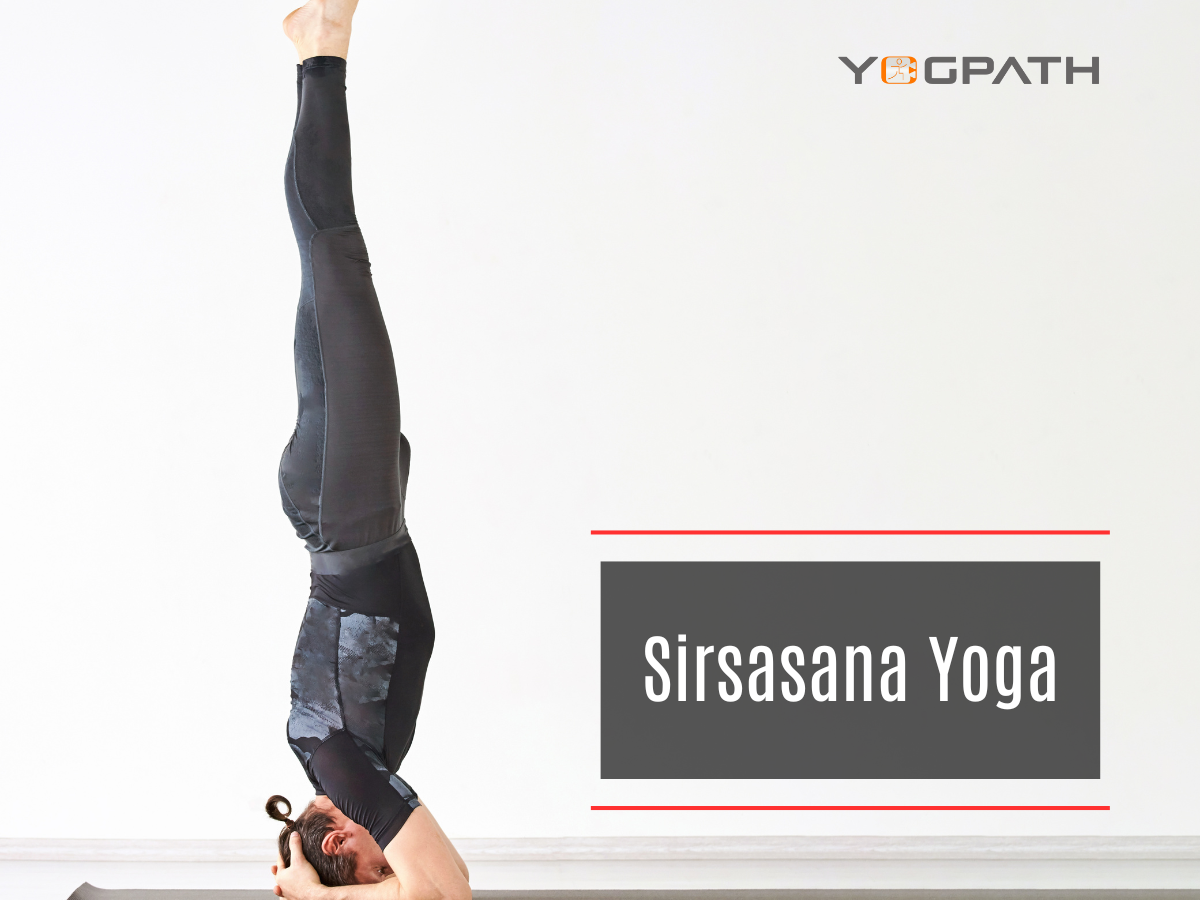
‘Sirsha’ means ‘head’ and ‘asana’ means ‘posture’, Sirsasana is the king of all asanas as it calls for balance on the crown and considerable power and ability. It is an advanced-level inverted yoga pose that rejuvenates the entire body and requires core, head, neck, and elbow strength. This pose is mostly used in Hatha yoga sequences and requires consciousness of the breath, body, and mind.
Benefits of Sirsasana
Strengthens Shoulders and Arms
You are pushing down into the ground with your forearms as you support yourself in a headstand, using the strength in your arms, shoulders, and back to keep the weight off of your head and neck. This position is great for increasing muscular endurance and upper body strength.
Relieves Stress
Headstand is regarded as a cooling position because it encourages you to focus inward. If you are suffering from anxiety, stress, fear, or any other unsettling emotions, adopting this position will be quite beneficial. The regular practise lowers blood pressure and strengthens certain blood arteries in the brain by relaxing and compressing them.
Improves Blood Flow to the Eyes
Sirasana helps you to deliver more oxygen and nutritious blood—rich in nutrients—directly to the eyes. The problems of any eyesight deterioration or other frequent eye diseases are kept at bay because of the enhanced blood flow to the eyes.
Increases Blood Flow to the Head and Scalp
If you want to enhance the nutrient flow to your head and scalp, a headstand is a great posture. By turning over down, you can encourage your body to supply more nutrients and oxygen to your scalp, which will enhance the flow of nutrients to your hair follicles. As a result, this pose swiftly resolves any hair issues.
Improves Digestion
When someone performs a headstand, gravity’s influence on the digestive system is reversed. Because of this, you may help expel any trapped gases or unhealthy stuck material from the digestive system. It boosts blood flow to the vital digestive organs, which will increase nutrient absorption and delivery to your cells.
Improves Pituitary Functions
The pituitary gland is referred to as the ‘master gland’ since it regulates the function of numerous other glands that are connected to it. The endocrine system is made up of various glands, such as the thyroid and adrenal glands. This ductless gland releases hormones directly into the bloodstream. Poor appetite, weakness, nausea, mood disturbances, body aches, painful periods, and dry skin are a few symptoms of a pituitary gland problem. It stimulates the neurological system and improves endocrine system regulation. Practicing Sirsasana will squeeze your adrenal gland which is responsible for releasing stress hormones.
Boosts Lymphatic System
Your lymphatic system is also referred to as your waste disposal system. Flipping onto your head will directly stimulate your lymphatic system, aiding in the removal of toxins from your body. You improve the health of your body by getting rid of contaminants. Additionally, the lymphatic system aids in the movement of fatty acids from the digestive tract and uses white blood cells to fight infections. Sirsasana facilitates the flow of the lymphatic system which accelerates the process and improves metabolism.
Strengthens Core Muscles
The headstand is a powerful core exercise. Your ability to maintain your balance and hold your legs up during the posture will depend on your core strength. In yoga and life in general, having a strong core makes you more resilient and less prone to injury.
Improves Focus
Your brain receives more blood flow while you are upside down. This can help you focus more clearly and function more effectively. This will help increase your level of concentration and make you more aware. This yoga pose will increase your ability to maintain your mind sharp and healthy, as well as reduce your feeling of stress, apprehension, and anxiety.
Decreases Edema
Edema in the legs is painful, and it can develop if you frequently stand for extended periods of time. The painful sensation of edema will be relieved by flushing out accumulated water in the legs and reversing gravity’s effects on your body fluids.
Steps
- Tuck your t-shirt into your track pants so that it won’t bother you when you perform the upside-down position.
- Bend forward while seated in Vajrasana, forearms folded and fingers intertwined on the ground.
- The hands and head are arranged in a triangle on the ground.
- Place the head’s crown between the entwined fingers.
- Slowly place the fingers on the head.
- Straighten the knees and glutes by raising them off the ground.
- Move the feet slowly in the direction of the trunk.
- Now get ready to get up off the floor by bending your knees, keeping your heels close to your buttocks, and gradually straightening your hips until your thighs are parallel to the ground.
- As you slowly straighten your knees and calves, make sure your body is vertical and your feet are comfortable.
- For a few seconds or as long as it feels comfortable, keep the body in balance and hold this position. Advanced yogis can begin with one minute and work their way up to at least five minutes.
- Concentrate on your breathing and the area around your head.
- Reverse the sequence of the steps when returning.
- Bring the thighs back to being perpendicular by slowly folding the legs.
- Drop the legs to the ground gradually.
- Sit in Shishuasana for a while to regain your balance after being inverted.
- Relax your hands, then take a Vajrasana stance.
- Spend a while in Savasana to relax.
Precautions
- If you’re a novice, make sure you’re doing the Sirsasana in the presence of a certified yoga instructor. Only practise independently after receiving permission from your instructor.
- Take your time and be patient. This asana needs practise to master.
- If you’re a beginner or are just starting out, make sure to execute it close to a wall for stability.











